Three low cost ways to increase conversion rates through Agile Product Storytelling

Brian Hennessy
Talkoot CEO and Co-Founder
The financial strains of COVID-19 have many direct to consumer brands looking for low- or no-cost ways to increase revenue. That usually means either driving more traffic to your website or converting more of the traffic you already have into paying customers.
Most tactics focus on one at the expense of the other. But an approach you can take now — with little or no upfront investment — can have significant impact on conversion rates while also helping organic SEO: crafting more consumer-centric product stories on your PDP through Agile Product Storytelling.
Agile Product Storytelling in a Nutshell
Agile Product Storytelling is simply doing on the product page what every successful DTC brand does so well everywhere else in their business: continually optimize the customer experience through data-driven insights. In this case, serving up product stories that are as useful and relevant as possible at the moment of purchase.
Here’s a quick example of what I mean. Say you’re selling a long sleeve running shirt. Runners buy long sleeve shirts all year round. But they buy them for different reasons at different times of the year. This product story from The North Face is perfectly appropriate November through February:
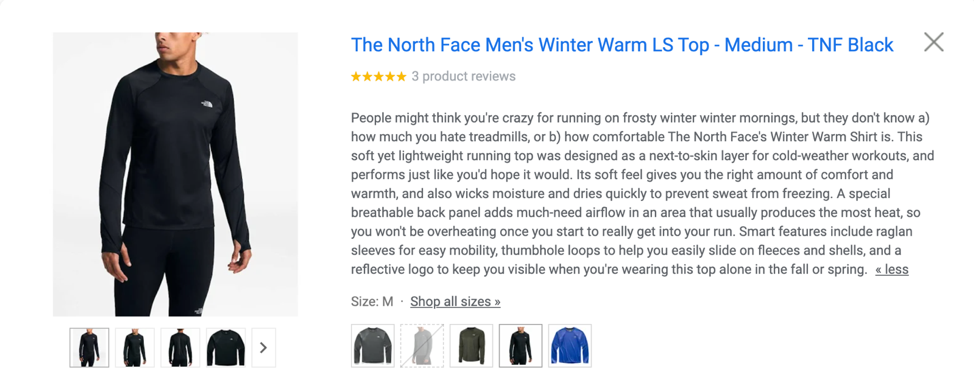
But come March nobody wants to hear about frosty winter mornings — especially if you’re still suffering through them.
Don’t get me wrong, plenty of people still wear long sleeve running shirts in spring and summer. They just don’t buy them for the same reasons they do in the dead of winter. They buy them for a little extra coverage on cool, evening runs. They wear them for UV protection on sunny summer days. They keep them in their running bag in case of an unexpected cloud burst during their daily lunch run. A product story based on any of these insights would lead to higher conversion rates and better SEO during warmer months than The North Face example.
But rather than crafting season-specific stories throughout the year that let the consumer know you really understand what they’re shopping for now, most brands craft generic, evergreen product content they hope will be appropriate for all consumers on all occasions. The Brooks product description below is a perfect example:
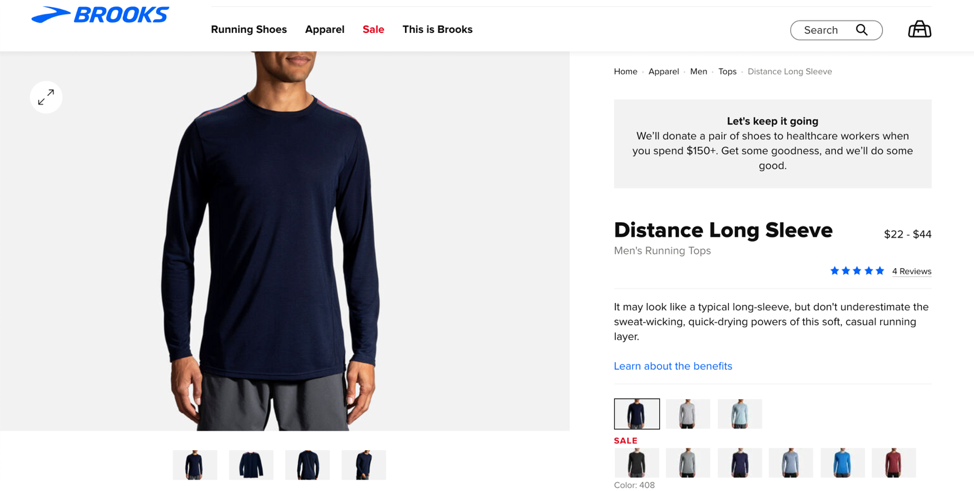
With product copy like this, Brooks is attempting to speak to as wide an audience as possible by being as generic as possible. What they actually end up with is a product description that isn’t relevant to anyone at any time of the year. They also end up with lower converting product pages, poor organic search and less revenue than they actually deserve given the quality of their products and their stellar brand recognition.
Agile Product Storytelling: A true conversation at the product page
With Agile Product Storytelling, the goal is to match on the product page what consumers expect in real life: a thoughtful, relevant conversation that answers the questions they have about the product they’re interested in right here and now. If you were to walk through the door at a running specialty shop in July and ask about a long sleeve running shirt, no sales associate in their right mind would begin by telling you how great the shirt is for frigid winter runs. The same is true on your product page.
Adapting your content for seasonality is just one example of agile product storytelling. There are endless ways to optimize your product page content to be more relevant in the moment — most of which will prove to have a corresponding uplift in your conversion rate.
Of course, some of what you try won’t work. The key is to start experimenting to find out what works for your particular brand and your particular shoppers. Then keep experimenting because higher conversion rates are a moving target and there is always room for improvement.
The upside to starting right now is that there is no downside.
Whether you write it yourself or hire an agency or freelancer, the all-in cost of producing a single well-crafted, consumer-centric product story should easily pencil out to less than $100. What that means is your investment only needs to increase sales of each of your products by two or three units to see a return on your investment. That is a very low bar.
More likely, your ROI on that first $100 will be similar to the 5% lift in conversion rates achieved in a study on the power of product storytelling by market research firm Origin. And based on my own experience creating product content for some of the world’s most beloved brands for over a decade, that 5% is just a starting point. Brands with a mature Agile Product Storytelling process should expect to see a 10%-20% rise in conversion rates.
Three examples of how you can apply Agile Product Storytelling
When most people think of the product page, they think of product information. But product information is only one factor to consider when crafting your product story. The other two factors you need to consider are 1) the target consumer and 2) the purchase context. Optimizing for all three — product, consumer and context — is how you turn dry product descriptions that explain into high impact product stories that convert.
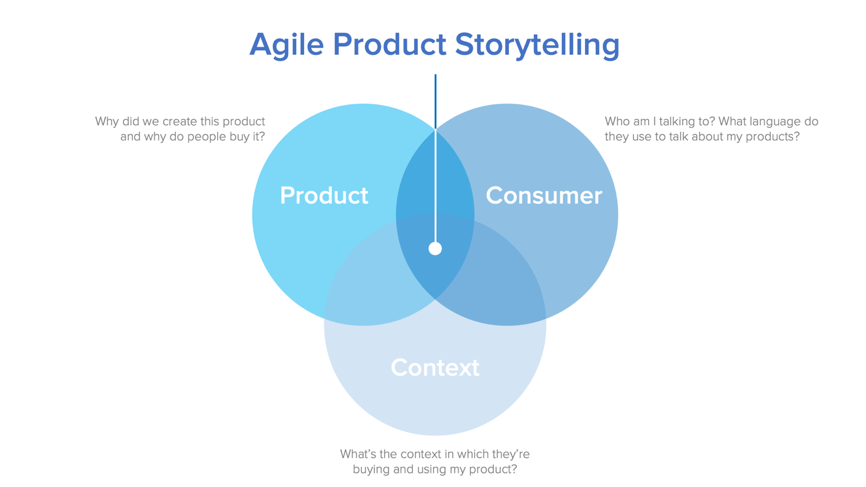
#1 Optimizing for the consumer
Different consumers will buy the same product for very different reasons. And those differing reasons will often require differing product stories. Take snowboard equipment, for example. If you sell your products in your own channels as well as on Amazon, you’ll find very little overlap between the customers who buy in those two channels.
Customers who shop on your own DTC website are likely to be deeply immersed in snowboard culture. They know exactly what they’re looking for and why. They’re familiar with the language of snowboarding and all its insider references. And they come to your website because you’re a brand they trust. This product story from backcountry.com is a great example of how to speak to snowboarders about a snowboard boot:
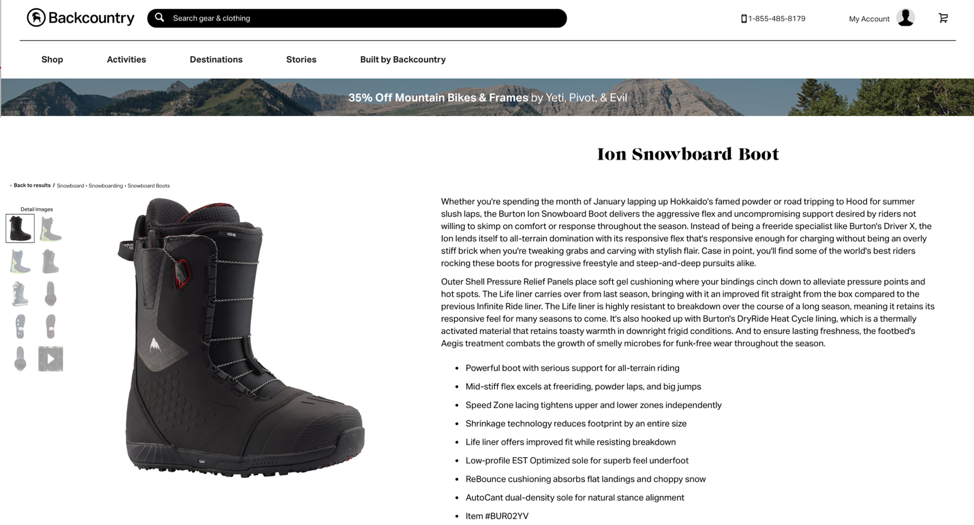
People who shop for snowboard gear on Amazon, on the other hand, are usually just beginning to dabble in the sport. Or they’re parents buying gear for their kid. On Amazon your story will have to do much more education on the product and sport. It should also be written in much more accessible language with minimal insider references.
You’ll want to spend some time helping them get to know your brand as well, since they’ll likely be unfamiliar and trust will be low. Finally, you should play down the all-terrain performance of the boot and play up other aspects that make is seem like a safer choice, like versatility, all-day comfort and multi-season durability.
The key to optimizing for the customer is to: 1) have a solid understanding of all your buying personas, 2) which of your products each persona shop for and 3) what channels each persona shops in. Then make sure your content creators have that information in front of them as they craft unique product stories tailored to each persona.
#2 Optimizing for context
Our earlier example of the long sleeve running shirt is one way to adapt your product story to fit the buying context. But context isn’t just about seasonality. A pandemic, for instance, is another very good reason to rewrite your product copy. Could that lightweight merino top that was perfect for globe-trotting adventure travel before the pandemic now be now be a perfect top for couch-surfing pandemic survival?
“If we were selling product for outdoor lifestyle right now, at a time when people can’t leave their house, that would be inauthentic…it wouldn’t feel right.” — Joe Kudlar, Vuori Founder and CEO (Source)
Cards Against Humanity gave us one of the most famous examples of agile product storytelling back in 2016. Following the Presidential election, CAH tweaked the story on their product page to capture what many of their customers were feeling at that particular moment in history. It had nothing to do with the product and everything to do with connecting with their customers in a shared moment of grief. In other words: it had everything to do with context.

Depending on your political affiliation, the reference may or may not be funny. But you can’t argue with the results. Just Google “cards against humanity,” “copywriting” and “trump” and you’ll find thousands of influential blogs talking about — and linking to — this product page. The amount of organic traffic, not to mention sheer brand awareness, this product story generated for CAH boggles the mind.
But your product page doesn’t have to go viral to drive sales. Small Easter eggs strategically placed in your product story can increase page views, time on site and average order value. Take the example below from underwear brand TomboyX. A sly reference to the cult Netflix documentary Tiger King is a wink to shoppers that lets them know TomboyX isn’t just another a nameless, faceless corporation. Instead, it tells them TomboyX is a company with a sense of humor, full of people that understand their customers because they’re pop-culture junkies just like them.
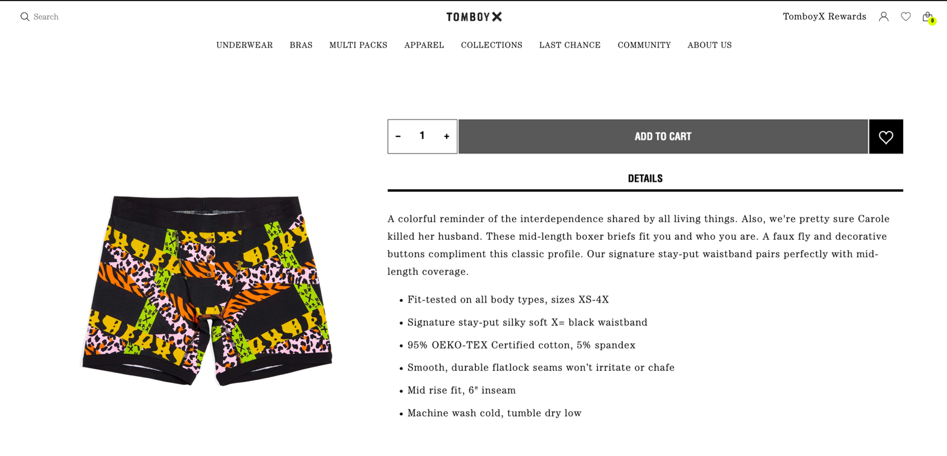
Optimizing for context is more art than science. They key is to generate some hypotheses about what events throughout the year have an impact on your customers’ purchase behavior. Then start doing some A/B testing that can prove out those hypotheses.
There are some contextual cues like seasonality, holidays and events that are easier to plan for. Then there are the unexpected moments, like an election, run-away hit documentary or a global pandemic that aren’t as easy to plan for. But it’s these unexpected cultural moments that have the power to change a brand’s destiny. You just have to have the organizational trust, support and agility to take calculated risks on your product page. And, of course, the ability to measure the results.
#3 Optimizing for the product
Getting the correct information on the product page seems like table stakes for e-commerce success. But with all the people and moving parts involved in the creation of a complex consumer product line, it’s more difficult than one might expect.
Surprisingly even most successful brands don’t have a good handle on how many of their product pages have missing or incorrect product information. This is borne out by the fact that 64.2% of all consumers have returned a product because it didn’t match the description.
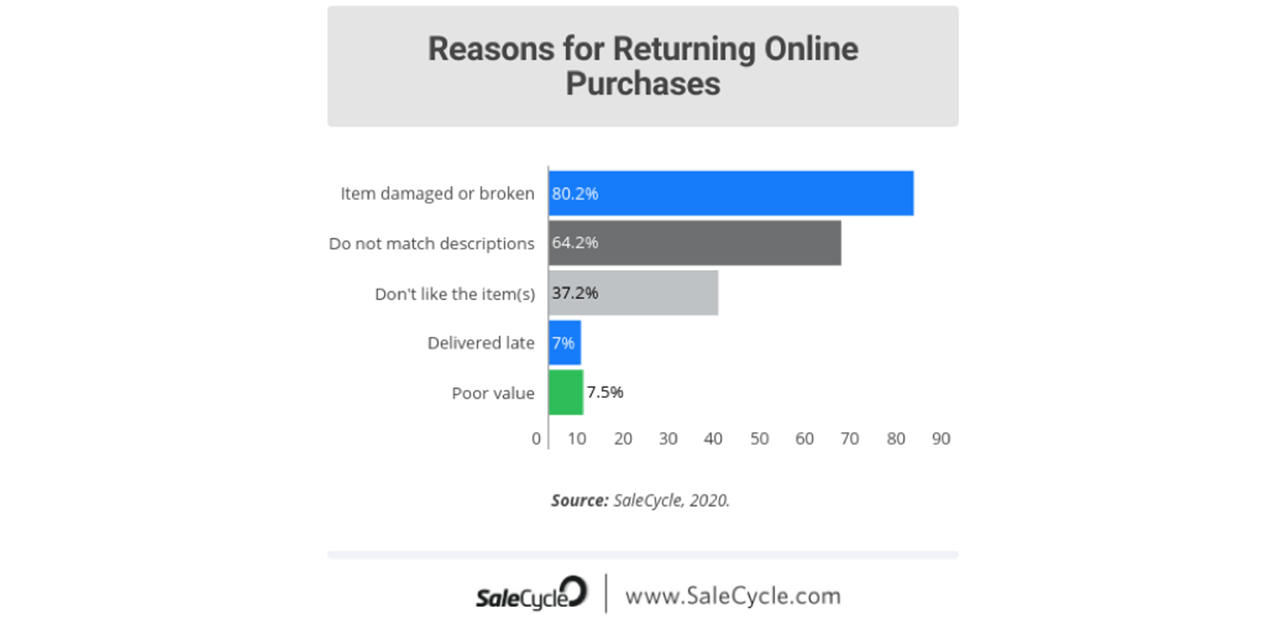
And it’s not just obvious errors in the product information that drag down sales and increase returns. You could have all the details right, but still not put those details together in a way that describes the product adequately for the consumer.
A perfect example: When I ran my own product content studio, I received a call from a client. Sales of one of their seasonal highlight shoes were trending far lower than projected. When they investigated, they found the product story we’d written for the PDP didn’t highlight the specially designed lenticular upper.
The reason for the error was that, when we’d written the product story months earlier, the lenticular upper wasn’t a primary selling point. So we buried that detail in the specifications. But in the intervening months, the wild look of the upper had become the shoe’s primary selling proposition. And our client had created a whole outbound campaign around the upper designed to drive sales to the PDP.
The campaign worked. It drove tens of thousands of people to a product page that barely mentioned the upper. The facts were all correct, but we framed them all wrong. It left customers confused and conversions plummeted. Luckily the client caught the error in time. Once the product story was rewritten to align with the outbound campaign, sales returned to plan.
Most brands scrupulously track sales and return data. But that data rarely finds its way back to the team able to adapt the product story in time to reverse downward conversion trends as they’re happening. The result is excess inventory and steep end of season markdowns.
The key is to put a process in place that allows you to monitor your site for low performing pages and alerts the content team that changes are needed so you can continuously optimize product content and recapture incremental revenue that would otherwise be lost to missing or flawed product information.
Crawl, Walk, Crush it.
No need to revamp the product copy across your entire product line tomorrow. Start with a single collection or category to prove out the ROI. Since the barrier to entry is so low, you don’t need to knock it out of the park in the first month. But I predict you’ll see results that will far outweigh the costs. Once you are confident in the power of Agile Product Storytelling to produce bottom line results, it’s time to start building out an ongoing process to continually monitor and optimize your stories across the entire year.
The end goal is to create a real time feedback loop with shoppers — using their own sales and return data, as well as their reviews and feedback — to help craft product stories that pique their interest and turn them into buyers. The result will be steadily rising conversion rates and higher traffic across all your product pages, which all add up to greater revenue. All with minimal upfront investment.
